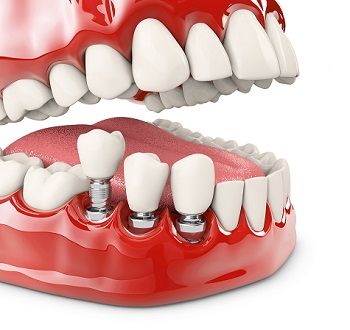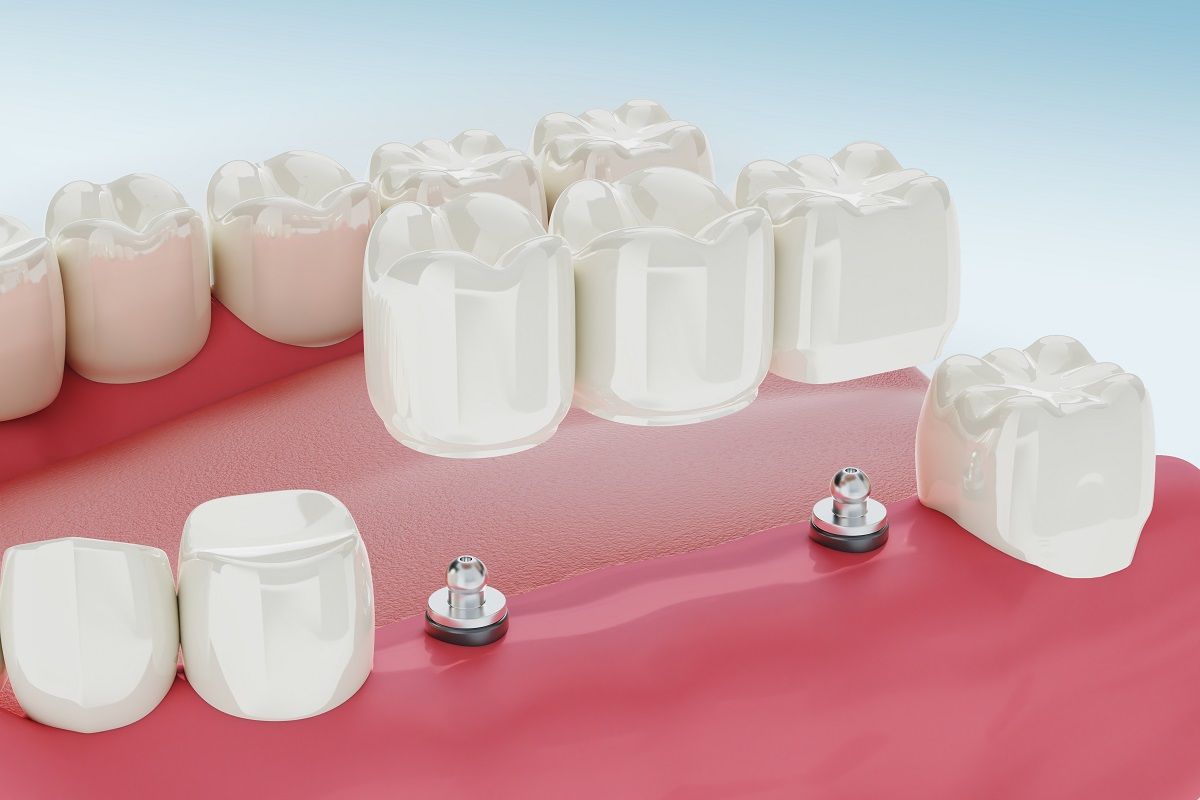Dental implants are replacements for missing teeth fixed into a person's jawbone by a dentist or oral surgeon. A dental implant artificially takes the place of a tooth. The replacement tooth and the dental implant are joined together by a component known as an abutment.
A crown is attached to an implant surgically inserted into the jawbone by a screw-like device. The implant acts as a foundation for the crown. It is an artificial tooth for the individual so that it will fit properly in their mouth and match the color of their natural teeth.
Types of Dental Implants
Implants for missing teeth function similarly to natural teeth, anchoring to the jaw. In the long run, they'll help keep jawbones healthy and help reduce bone loss. Without an implant, individuals will have trouble chewing and speaking typically.
- Endosteal/Endosseous Implants:
The difference between endosteal and subperiosteal implants is that the former are fused into the jawbone while the latter are only affixed. As a result, endosteal implants are typically more stable and long-lasting than subperiosteal implants. More invasive surgery may be necessary, though.
A two-stage implant process is typically necessary for endosteal implants. The initial procedure involves fusing the screw-like implant into the patient's jawbone. A second treatment is required to expose the abutment and install the fake tooth after the implant has fused with the jawbone. Those considering endosteal implants should typically be in good health.
- Subperiosteal implants:
Unlike endosteal implants, which become permanently integrated into the jawbone, surgeons use subperiosteal implants to attach them to the jawbone. As the dental implant abutment is visible in a subperiosteal implant, this implant requires a one-stage procedure. It ends the need for a second procedure to secure the replacement tooth permanently.
Patients with insufficient bone density in their jaws typically require subperiosteal implants. When comparing dental implant options, subperiosteal implants are often much safer and less invasive than endosteal implants. That's why they're ideal for people who don't want to risk a more extensive operation.

Five reasons for getting Dental Implants
- To appear naturally and to fit comfortably
Implants for missing teeth make your teeth look natural and beautiful. Also, patients who have received implants may enjoy life without worrying about how they look when they smile, eat, or interact with others because their dentures won't slip out.
- Durable and trustworthy in its performance
If taken care of properly, implants can last as long as more conventional tooth restorations and produce more consistent results.
- Enhanced capacity for both eating and chewing
Implants for missing teeth function similarly to natural teeth in the jaw. In the long run, they'll help keep jawbones healthy and help reduce bone loss. Without an implant, individuals will have trouble chewing and speaking typically.
- It enhances facial and bone attributes
By removing the need to grind down healthy tooth enamel, as is done with traditional bridgework, implants help to preserve healthy tooth tissue. In addition, they will forestall the degeneration and bone resorption that shorten the jawbone. Such implants not only help to repair the structure of your jawbone, but they also help to protect the natural tooth tissue and minimize bone resorption and degeneration, both of which can lead to a loss of jawbone height.
- High rate of success
Dental Implants, when properly designed and managed, have survival rates that are on par with or better than other methods of tooth replacement. Implants are most likely to be successful in otherwise healthy people. The success rate of implants should increase as new methods and technologies become available.
Conclusion
Dental implants appear and function similarly to your natural teeth, but they also have the same appearance and have the potential to endure for one's entire existence. Such implants can help avoid bone loss, which is another benefit. They can help prevent sagging skin on the face as well as premature aging of the teeth. As a result of the advantages, getting dental implants will unquestionably be worth the effort and expense you put into getting them.
Contact your Pinole dentist, Azadeh Hosseini, DDS, or Ghazal Hosseini, DDS, at Top Pinole Dental to learn about different types of Dental Implants and their Uses.
Resource:
*This media/content or any other on this website does not prescribe, recommend, or prevent any treatment or procedure. Therefore, we highly recommend that you get the advice of a qualified dentist or other medical practitioners regarding your specific dental condition*

